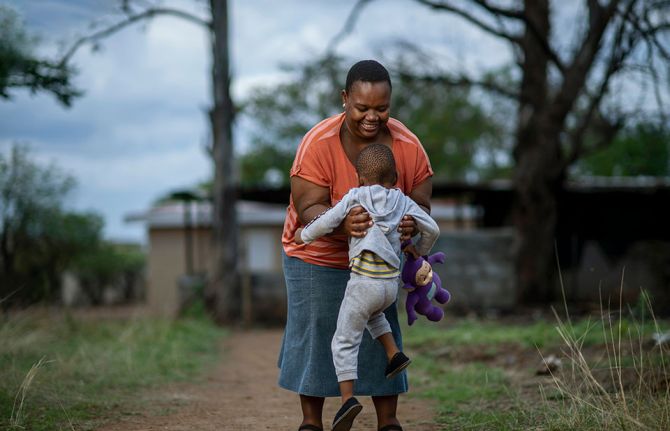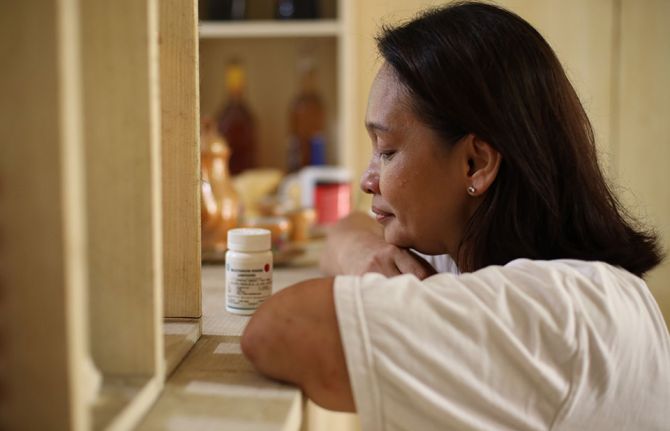

Feature Story
Co-creating a new global initiative to end AIDS among children, adolescents and their mothers
10 December 2021
10 December 2021 10 December 2021A global consultation process to co-create a new initiative to eliminate vertical (mother-to-child) transmission of HIV and end AIDS among children was launched by the UNAIDS Joint Programme and partners at the 2021 International Conference on AIDS and STIs in Africa in Durban, South Africa.
Previous global partnership initiatives, such as the Start Free, Stay Free, AIDS Free framework increased HIV treatment coverage for pregnant women living with HIV from 45% in 2010 to 85% in 2020 and reduced new HIV infections among children by 54% over the same period. Despite these successes, children, adolescents and mothers have been disproportionately impacted by HIV and left behind by the global AIDS response.
In 2020, there 150 000 new HIV infections among children, mostly occurring because adolescent girls and women could not access or continue with the HIV testing, prevention and treatment services they need throughout pregnancy and breastfeeding. One of the most glaring disparities is our failure to meet the needs of children living with HIV. While 85% of pregnant women living with HIV were receiving HIV treatment, only 54% of children living with HIV were on treatment in 2020. Only 40% of children living with HIV had viral load suppression, compared to 67% among adults. Almost half (46%) of the 1.7 million children living with HIV are not receiving life-saving HIV treatment and 60% are aged five to 14 years.
The session was opened by two powerful voices from affected communities. Dudu Dlamini, from the Sex Worker Education and Action Trust South Africa, highlighted the intersecting challenges, stigma and discrimination faced by mothers living with HIV who are also from key populations. Miriam Hisasha, from the Uganda Network of Young People Living with HIV/AIDS, is a young mother living with HIV who noted that young women often do not have the power or knowledge to make positive choices.
The need for urgent action at the community, national, regional and global levels was explained by Meg Doherty, from the World Health Organization. Ms Doherty outlined what needed to be done differently by a new global initiative to bring about rapid change for children, adolescents and mothers living with or affected by HIV.
The global consultation process, including an online survey, was launched. All partners and stakeholders were encouraged to take part in the survey before 20 December.
National and provincial department of health officials from Nigeria and South Africa gave powerful presentations on their successes and also their needs for support to achieve better services to eliminate vertical transmission and end AIDS among children.
Many conference participants and technical and implementing partners gave statements of support for the new initiative during the discussion session.
Shannon Hader, the UNAIDS Deputy Executive Director, Programme, concluded the session by emphasizing that a new global initiative should place children, adolescents and mothers at the centre, not just as recipients but as leaders of the HIV response. Leadership from all levels will be essential to build political commitment, create and share innovative responses and establish mutual accountability. Strengthened community-led and community-based action will increase impact and support workers on the pandemic front lines. Better collection and use of data will help targeted action. Human-rights and societal enablers must be meaningfully addressed to achieve comprehensive impact. Equitable access to innovative health technologies for children and pregnant and breastfeeding women should be prioritized. The time to act is now in order to end AIDS among children, adolescents and mothers.
Quotes
"Progress in ending AIDS in children and mothers has stalled due to ingrained inequalities and disparities, but the solutions are already out there. Experiences of transformative strategies, ‘surges’ of innovative programs engaging communities and delivering rapid results need to be shared and amplified, so that countries can reach all women and children in need. It is time to come together and co-create an innovative new coalition that will boost and support urgent community and country action for and with children, adolescents and women.”
“Children continue to be left far behind by innovations in HIV prevention, testing and treatment. In addition, gaps in reaching at-risk pregnant and breastfeeding adolescents and women living with HIV with much needed HIV prevention and treatment services persist. PEPFAR is committed to joining a renewed global partnership to urgently end AIDS in children and mothers.”
“As adolescent girls, we face many challenges that make it harder for us to protect ourselves from HIV and early pregnancy. Sometimes, we do not have the power or knowledge to make positive choices.”
“While great progress has been made to reduce new HIV infections in children, we still had 150 000 children born with HIV in 2020. This is unacceptable, because every one of these infections is preventable. A prolonged COVID-19 pandemic is deepening the inequalities that lead to more infections among children. Much more needs to be done to scale up needed antenatal and postnatal HIV services for women and their children, particularly in west and central Africa and among key and vulnerable populations. We are failing to detect many paediatric infections because of limited scale up of point-of-care technologies for early infant diagnosis and prompt treatment initiation for those that are infected. We are failing to avert new infections due to limited progress in integrating service delivery systems that protect mothers—especially young mothers—and infants throughout the breastfeeding period. The Global Fund is committed to working with the global community to address these challenges and reach our common goal to eliminate these preventable HIV infections in children.”



